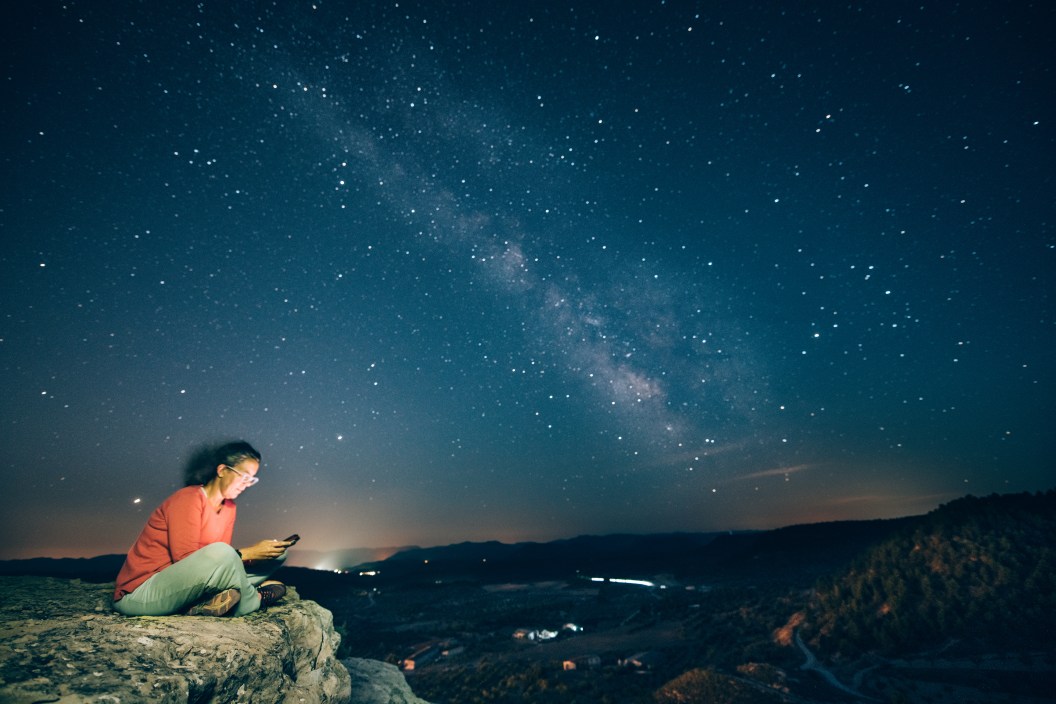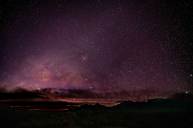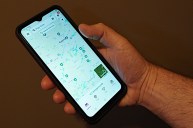Gazing up at the night sky viewing stars and constellations is an incredible way to spend an evening. You might even catch a glance of a comet or asteroid streaking by or the International Space Station passing overhead. While using just your eyes offers an amazing immersive experience, technology can help you dig a little deeper and provide an amateur stargazer with even more knowledge about space.
Some astronomy apps focus on teaching kids about astronomy in a user-friendly way, share the mythology of constellations, or show a detailed look at the planet themselves. Numerous stargazing apps provide opportunities to use augmented reality in real-time to learn more about what you're seeing. Others are helpful in providing detailed information about light pollution, moon phases, eclipses, celestial events, and forecasts.
Whether you're an amateur astronomer or a pro, consider downloading one or more of these apps from Google Play (for Android devices) or the App Store (for iOS products like iPhones and iPads) to enhance your stargazing experience. Some are free, some cost a few dollars, and some incorporate in-app purchases.
With so many night sky apps to choose from with a wide variety of useful features, we've highlighted a few that can help maximize your time looking up at the sky.
1 of 8. Star Walk and Star Walk 2
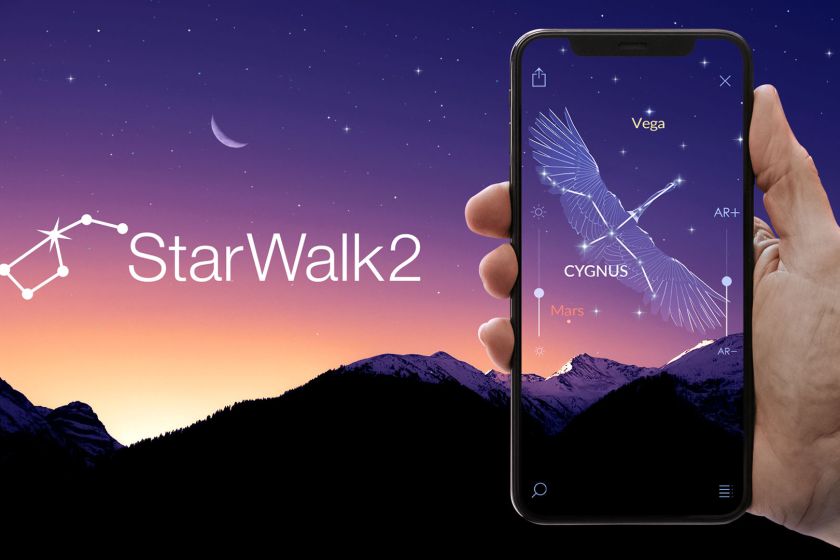
StarWalk
Star Walk features a great graphic interface and lots of information, including an augmented reality sky view for an interactive guide to the night sky. Star Walk 2 is available as a paid version, or a free version with ads.
Key Features: Use night mode to preserve your night vision while learning about phases of the moon, planets, stars, and constellations with real-time celestial body tracking. Use the "time machine" feature to move forward or backward in time for a peek at what the night sky looked like (or will look like) far in the past or in the distant future. Use the app's augmented reality features to identify what you see in the night sky right now.
With Star Walk 2, you'll find a beautiful new interface and design, with vibrant colors, visuals, and sound effects, as well as 3D models that portray different celestial bodies. Use the "Visible Tonight" section for the latest in the night sky, and the "What's new" section will keep you up-to-date on the latest astronomy news.
Price: Free to $2.99
Platforms: iOS and Android
2 of 8. Stellarium Mobile
This planetarium app provides fascinating insight into constellations and stars and helps you spot planets, stars, constellations, and satellites just by pointing your phone into the night sky. For a more detailed look, zoom in on the Milky Way or deep space objects, use the app to track artificial satellites, and more.
Key Features: This night sky simulation includes satellite tracking as well as landscape simulations that depict the sunrise, sunset, and more. The app also includes a night sky mode to help you save your night vision for stargazing. Upgrade to Stellarium Plus for additional features like opportunities to gaze at the Gaia DR2 catalog of 1.69 billion stars, as well as more than two million nebulas and galaxies, with enhanced zooming capabilities. Without an internet connection, it still allows viewing of millions of stars, objects, and more.
Price: Free or $13.99 for Stellarium Plus
Platforms: iOS and Android
3 of 8. SkyView Lite
SkyView and SkyView Lite provide two versions of a favorite app, with Lite being the free version.
Key Features: SkyView Lite is an augmented reality stargazing app that helps identify celestial objects, constellations, planets, galaxies, satellites, and more. It provides augmented reality, as well as a time travel feature where you can look forward or backward in time. It also tracks the sun and moon for better viewing. This app works without Wifi or data connection, so you can even use it out camping. The upgraded version, SkyView, provides even more features, and the iOS version includes a Today Widget and Apple Watch compatibility.
Platforms: iOS and Android
Price: SkyView Lite is free; SkyView is $1.99 for Android, $2.99 for iOS
4 of 8. Night Sky
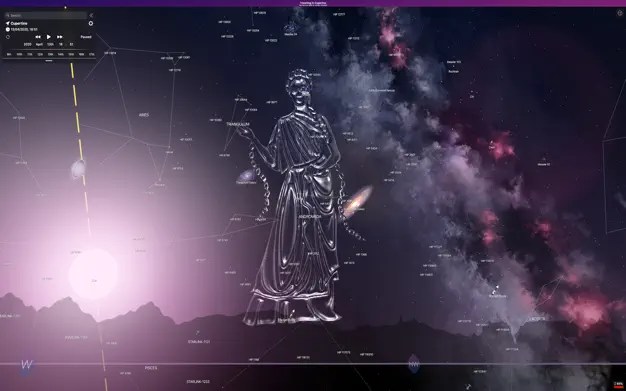
Night Sky
Popular among Apple users, this iOS app makes it easy to share the stargazing experience with others while using your iPhone or iPad.
Key Features: Customize your stargazing experience by adding your own Sky Tags to the map. These tags allow you to mark celestial objects so that you can keep track of them for later, and they also make it easy to label and categorize the objects you see. Share the stargazing fun by sharing these tags with friends and family members who also have iMessenger. The app also gives you a peek into planets' internal structures and provides great information about each planet.
A Plus version is available for a fee on the App Store, and it incorporates additional features, including a total of 1.7 billion stars, aurora mapping, and night sky tours. It allows stargazing with distant friends and family to be even easier using SharePlay and FaceTime.
Price: Free (Plus version is $5.99/month or $39.99/year)
Platforms: iOS only
5 of 8. NASA
The NASA app from the U.S. National Aeronautics and Space Administration is free for all users and offers opportunities to stay up-to-date with NASA news, providing everything from agency tweets to live NASA TV and podcasts. It incorporates information on how to visit NASA's visitors centers, and plenty of opportunities for social media sharing.
Any space aficionado will appreciate staying up-to-date on news ranging from NASA's Juno Mission finding an eerie face-like image on Jupiter just before Halloween (and learning about the storms and clouds that made the image, along with the community science project and volunteer that helped spot it), to updates on the James Webb Space Telescope to space station resupply missions.
Key Features: If you're fascinated by space news, the NASA app lets you go straight to the source, sharing more about the agency's missions and discoveries. You also get access to more than 20,000 incredible images, ranging from NASA experiments to auroras and space photos. The app incorporates satellite tracking with both 2D and AR 3D models to scope out things like the International Space Station. Keep an eye on the latest discoveries by allowing notifications for NASA events, images, and International Space Station sightings.
Price: Free
Platforms: iOS and Android
6 of 8. Light Pollution Map
Plan your next stargazing trip before you leave home by finding areas less impacted by light pollution where you can enjoy the night sky. The Light Pollution Map helps astronomers look into the sky, and helps astrophotographers find the darkest skies to produce the best images.
Key Features: Light Pollution Map includes a darkness countdown timer, as well as a horizon safe radius circle to avoid light pollution from the horizon. Its features include an aurora overlay so you can see if you are in an area that has a chance of seeing the northern lights. Use the International Space Station tracker for your best chance at glimpsing the station, and also be sure to use the cloud cover overlay to know the coverage outlook before heading outside. Track moonrise, moonset, super moon alerts, phase information, eclipse alerts, meteor showers and more.
It even includes the temperature, so you can prepare for the night ahead, with customizable settings. It's a great tool for amateur and pro astronomers and those wanting to try astrophotography.
Price: Free
Platforms: iOS and Android
7 of 8. My Moon Phase
Whether you're looking for the darkest sky under a new moon (to gaze at stars and constellations), or if you're seeking a bright full moon so you can use your telescope to peer at the moon itself, knowing the moon phase is key. This free app helps astronomers and astrophotographers do just that to maximize their experience.
Key Features: As the name suggests, this app provides a lunar calendar and information on the moon phases, including when the next full moon will be. You can even search by date to look ahead and get notified when the moon reaches a phase of your choice. All the app to use your current location, or select the location of your upcoming camping trip to plan ahead.
It also provides cloud cover information since you can't see the moon or the stars if it's clouded over and raining. It also includes important information for moon photographers, including the golden and blue hours.
Price: Free
Platforms: iOS and Android
8 of 8. Star Walk Kids
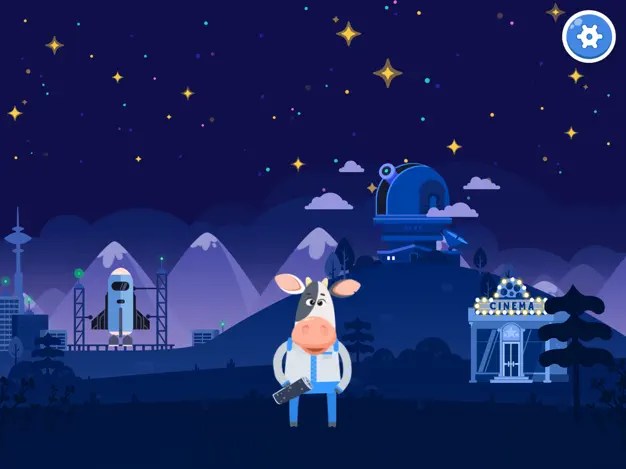
Star Walk Kids
Kids just starting out as stargazers may appreciate an app of their own to learn more astronomy in a fun way.
Key Features: Kids can learn basic astronomy and fun space facts with games, animations, illustrations, cartoons, and even little quizzes. With fun graphics, this educational app teaches kids about space, planets, stars, and more in a way that inspires the curiosity of budding astronomers.
Price: Free
Platforms: iOS and Android
Your Questions, Answered:
Wyoming Stargazing Executive Director Samuel Singer knows a thing or two about stargazing apps, so we asked him his thoughts about a few of his favorites. While many apps provide high levels of accuracy, Singer's finds Stellarium Mobile to suit his needs. He says he finds it "right on the mark in terms of its accuracy, the positions of objects in the night sky."
Singer says there are many free apps that work very well, and Stellarium Mobile is one of his favorite free app choices. It includes night sky simulations with an array of features.
Stellarium Mobile and Star Walk are Singer's top picks for locating planets in the sky. However, he also suggests using Planet Droid to find out what times the planets rise and set.
Reviewers at Space.com found the SkyView app to be very accurate, writing, "Once your device's onboard compass has worked out where you are and which way you are facing, the app is very accurate." The reviewers noted a manual option allows for adjustment if needed.
READ MORE: 8 Best Dark-Sky Parks in the United States for Dreamy Stargazing
